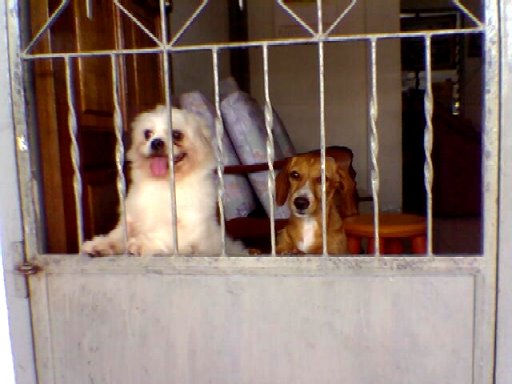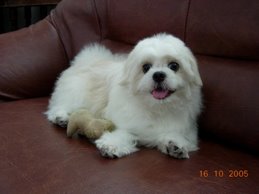Explanation About How A Dog Became The Best Friend Of Humans
Evidence shows that modern dog originates from a species of wolves (Eurasian gray) that lived on Earth fifteen thousand to forty thousand years ago. Before farming existed, canine races were domesticated by hunter-gatherers. Both dogs and humans were in a constant search for shelter and food. In many historic writings, the animal is mentioned as a helper in the activities of man, for protection, hunting, watching and fighting.
There is no clear data about what exactly happened in the history of the best friend of man. DNA examinations that were made on hundreds of dogs in 2002 revealed that the most diverse species from a genetic point of view is the East Asian one. In theory, the bond between humans and canines has formed in East Asia. There are researches who say that people tried to tame dogs even from the Ice Age Paleolithic period (32,000 years ago), when they were hunters.
It can be good to know the time of transformation of humans from hunter-gatherers to farmers, for discovering the real origins and evolution of man. The idea is that canines had an important role in the transition process. The transformation may have been impossible if plants and animals would not have been domesticated.
Even if there is a clear view on how cows, goats, sheep and pigs were tamed, there is no obvious perspective on canines. In order to uncover this mystery, studies are still being made. According to some researchers, the most recent wild dog originates from North America, from long before any humans lived there. The general idea is that the first dog had a wolf father and a jackal mother.
Modern research can prove that dogs have a high degree of intelligence and that humans were very much affected by this factor. In order to reach the state of evolution that is seen today, man needed to have relations with other species. It is not fully known how humans ended up selecting primitive canines for developing a friendship on long term. Some theories exist about the needs and the climate conditions that the transition implied.
In the need for food and shelter, both canines and humans had to hunt animals with the use of teeth or stone hatchets. Families had to be fed in order to survive. The primitive dog lived in caves or in tree trucks and it approached human camp fires in coldest seasons, when it became hungry and did not find any food. You can imagine how good could be for a starving animal to find some bones that a human left near the fire, because they could not be chewed by people.
Maybe one night the wild animal brought its family to the camp fire for feeling warmer. While hunting, humans could observe how wild canines had an advantage over them: their better sense of smell. A possible scenario can be the one in which an individual captured one of the puppies from a family and raised it. The adult animal could be trained and used as a hunting helper.
After reaching full maturity, the domesticated wolf could have realized how wonderful life among humans may be. Obeying the commands of a master and help provided in hunting sessions may be enough for getting a regular meal. The benefits of owning a dog were surely seen by other people and they become tamers themselves. At one particular time, there were many canines in human communities, almost equal to the number of people.
During many years of evolution, dogs and humans as well changed their appearance and behavior. One of the biggest transformations happened when dogs started to bark instead of the howling that came from their ancestors. After farming became common, domestic animals became more and more dependent on man and canines could guard cows, goat, or sheep.
But, for people to go hunting without compromising the safety of sheep, canines had to learn not to eat domestic animals. Taking care of sheep was not enough. There were different other objectives to guard, like properties, families and homes.
After dogs learned to fight for their masters, they became their best friends. There are references about the companionship between the two species of mammals that date 1500 B. C. The evidence can be found in pictures and texts, in the tombs of ancient Egypt, Pompeii ruins and Ethiopia. The domesticated canines were considered gods and kings in the past.
The dog is mentioned in the Bible and the Roman history. People can find pottery from American Indians and tapestry from England and France. There are many races in the pictures. It can be interesting how they have the same primitive ancestor.
Canines can have similar qualities like humans: communication, empathy, good memory and intelligence. The loyalty and friendly nature of dogs is well known since ancient history. There are opinions about a self-domestication of wolves. The idea is that there was a nicer group, which took advantage of the kindness of humans.
While dogs became part of human families, people also can be considered now as part of the pack. Humans usually leave things that can be eaten by dogs and this provided a new and unique niche for primitive canines to explore. Today, people care so much for pets that they take them to salons, dress them and offer them special treatment.
The appearance and behavior that is seen today at dogs was not something that occurred instantly. The modification was genetic and was achieved through selective breeding, in the time of many generations. The look of wolves began to change slowly, as soon as they became friendlier to humans. An obvious difference existed between peaceful and aggressive species.
Studies can show that dogs became friends to humans during an extended period of time, which started in ancient history. Primitive dogs started to be friendlier, more protective and to enjoy the company of humans. How exactly everything happened may not be known, but there is a sure fact that people all around the world know it: dogs are the best friends of man today.
There is no clear data about what exactly happened in the history of the best friend of man. DNA examinations that were made on hundreds of dogs in 2002 revealed that the most diverse species from a genetic point of view is the East Asian one. In theory, the bond between humans and canines has formed in East Asia. There are researches who say that people tried to tame dogs even from the Ice Age Paleolithic period (32,000 years ago), when they were hunters.
It can be good to know the time of transformation of humans from hunter-gatherers to farmers, for discovering the real origins and evolution of man. The idea is that canines had an important role in the transition process. The transformation may have been impossible if plants and animals would not have been domesticated.
Even if there is a clear view on how cows, goats, sheep and pigs were tamed, there is no obvious perspective on canines. In order to uncover this mystery, studies are still being made. According to some researchers, the most recent wild dog originates from North America, from long before any humans lived there. The general idea is that the first dog had a wolf father and a jackal mother.
Modern research can prove that dogs have a high degree of intelligence and that humans were very much affected by this factor. In order to reach the state of evolution that is seen today, man needed to have relations with other species. It is not fully known how humans ended up selecting primitive canines for developing a friendship on long term. Some theories exist about the needs and the climate conditions that the transition implied.
In the need for food and shelter, both canines and humans had to hunt animals with the use of teeth or stone hatchets. Families had to be fed in order to survive. The primitive dog lived in caves or in tree trucks and it approached human camp fires in coldest seasons, when it became hungry and did not find any food. You can imagine how good could be for a starving animal to find some bones that a human left near the fire, because they could not be chewed by people.
Maybe one night the wild animal brought its family to the camp fire for feeling warmer. While hunting, humans could observe how wild canines had an advantage over them: their better sense of smell. A possible scenario can be the one in which an individual captured one of the puppies from a family and raised it. The adult animal could be trained and used as a hunting helper.
After reaching full maturity, the domesticated wolf could have realized how wonderful life among humans may be. Obeying the commands of a master and help provided in hunting sessions may be enough for getting a regular meal. The benefits of owning a dog were surely seen by other people and they become tamers themselves. At one particular time, there were many canines in human communities, almost equal to the number of people.
During many years of evolution, dogs and humans as well changed their appearance and behavior. One of the biggest transformations happened when dogs started to bark instead of the howling that came from their ancestors. After farming became common, domestic animals became more and more dependent on man and canines could guard cows, goat, or sheep.
But, for people to go hunting without compromising the safety of sheep, canines had to learn not to eat domestic animals. Taking care of sheep was not enough. There were different other objectives to guard, like properties, families and homes.
After dogs learned to fight for their masters, they became their best friends. There are references about the companionship between the two species of mammals that date 1500 B. C. The evidence can be found in pictures and texts, in the tombs of ancient Egypt, Pompeii ruins and Ethiopia. The domesticated canines were considered gods and kings in the past.
The dog is mentioned in the Bible and the Roman history. People can find pottery from American Indians and tapestry from England and France. There are many races in the pictures. It can be interesting how they have the same primitive ancestor.
Canines can have similar qualities like humans: communication, empathy, good memory and intelligence. The loyalty and friendly nature of dogs is well known since ancient history. There are opinions about a self-domestication of wolves. The idea is that there was a nicer group, which took advantage of the kindness of humans.
While dogs became part of human families, people also can be considered now as part of the pack. Humans usually leave things that can be eaten by dogs and this provided a new and unique niche for primitive canines to explore. Today, people care so much for pets that they take them to salons, dress them and offer them special treatment.
The appearance and behavior that is seen today at dogs was not something that occurred instantly. The modification was genetic and was achieved through selective breeding, in the time of many generations. The look of wolves began to change slowly, as soon as they became friendlier to humans. An obvious difference existed between peaceful and aggressive species.
Studies can show that dogs became friends to humans during an extended period of time, which started in ancient history. Primitive dogs started to be friendlier, more protective and to enjoy the company of humans. How exactly everything happened may not be known, but there is a sure fact that people all around the world know it: dogs are the best friends of man today.
About the Author:
When you have a need for a lot more info on the german shepherd and black german shepherd puppies, please browse our internet site http://black-german-shepherd.net right away.
>














.jpg)






.jpg)

0 comments:
Post a Comment